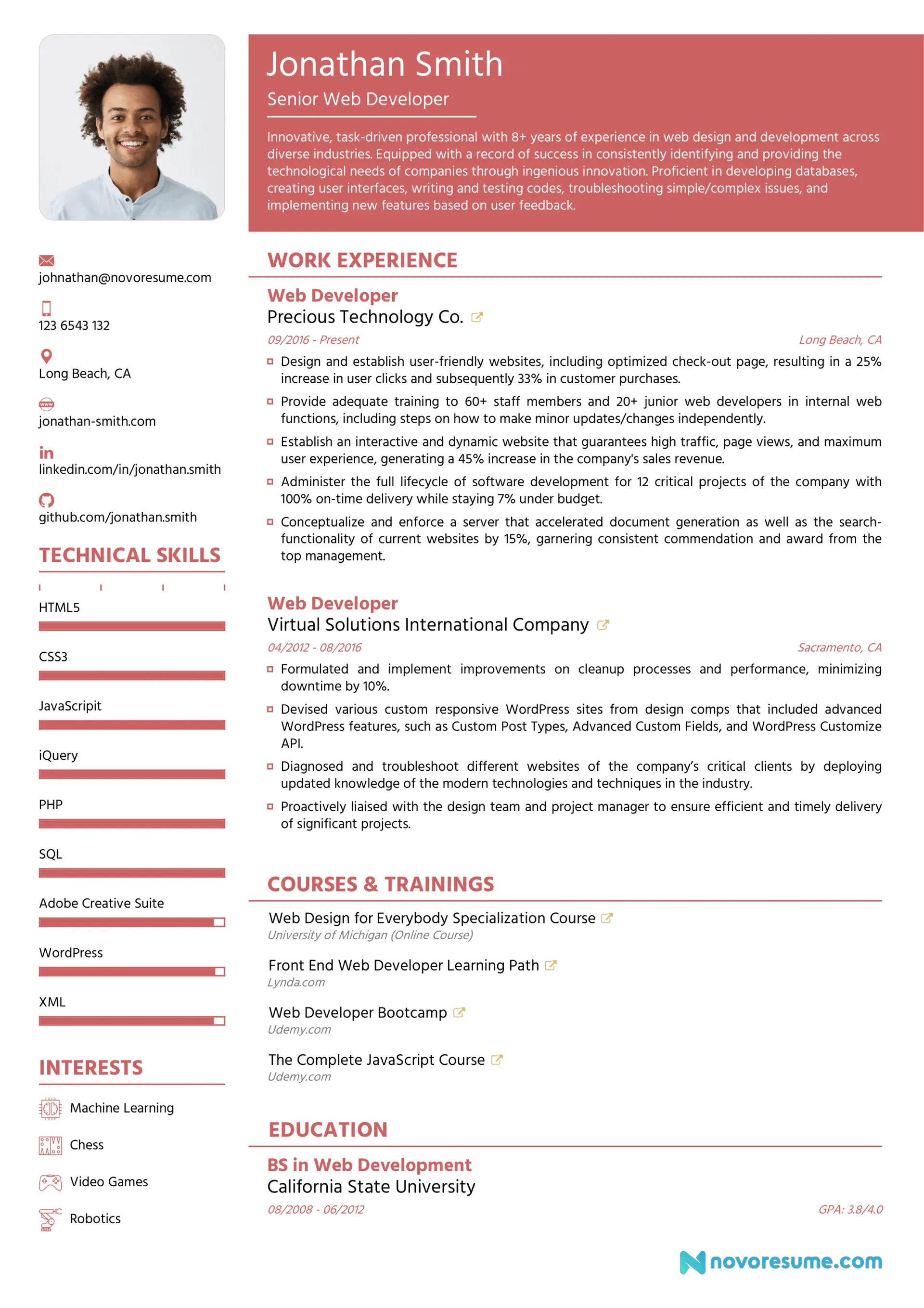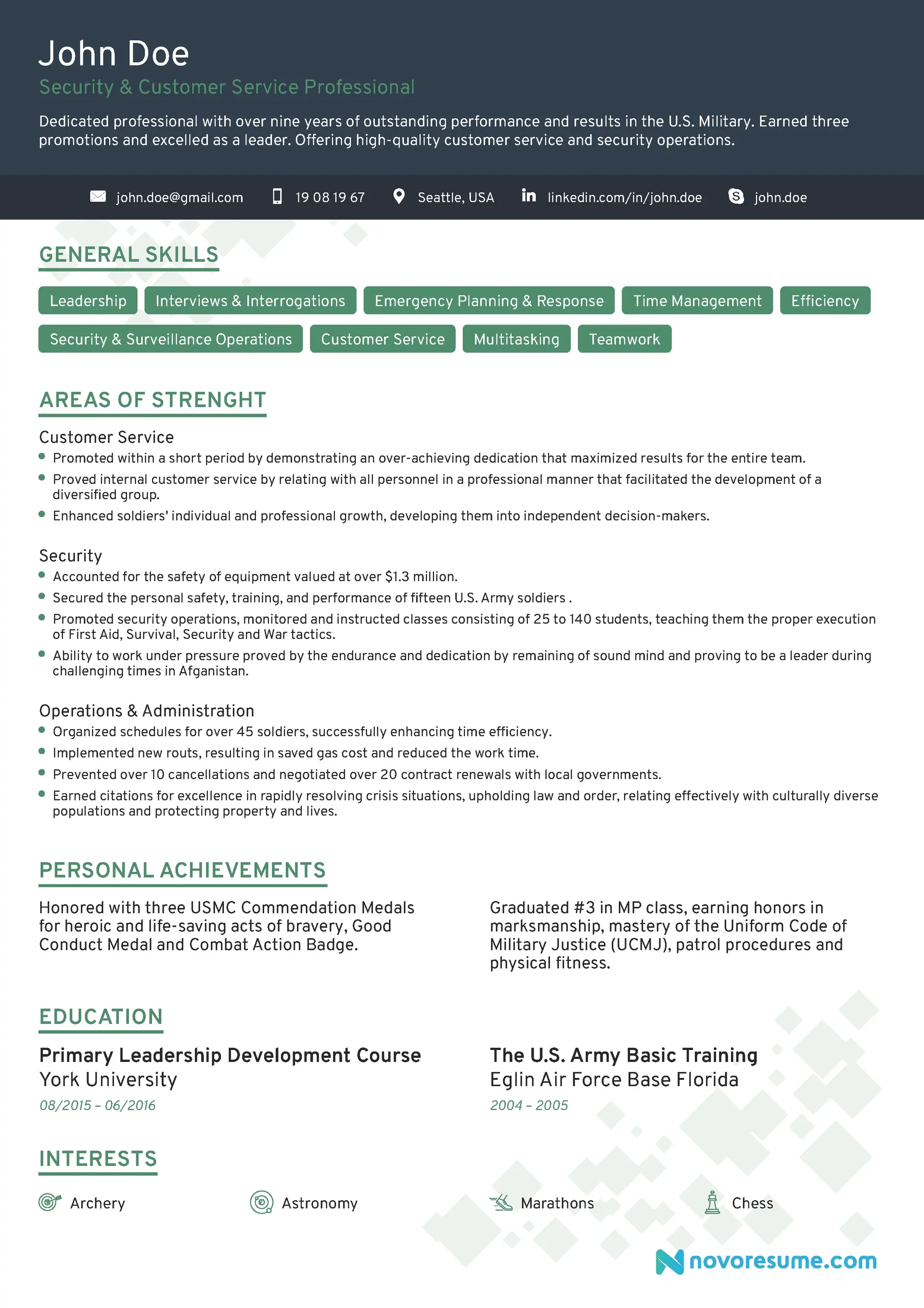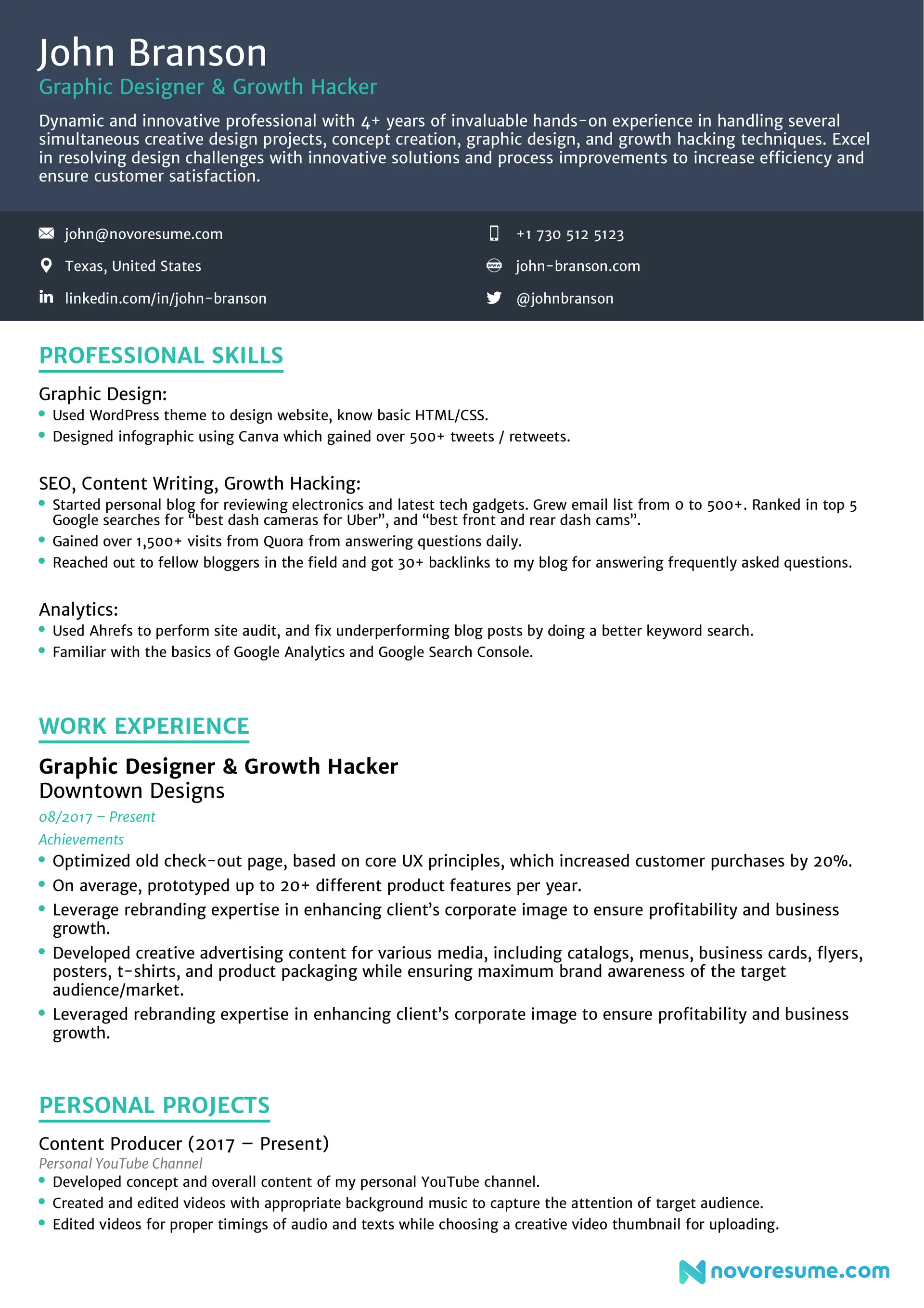Resume Structure & Formatting Guide [Get Hired in 2026]
Updated on 12/17/2025

Ever wonder how long recruiters spend looking at each resume?
Statistically, about 7 seconds.
This means you only have 7 seconds to present an appealing, comprehensible, and convincing resume.
For this reason, even the way you structure your resume sections or how you format everything matters a lot.
So, how to get it right? Well, we’re going to help you with just that!
In this article, we’ll go over the top 3 resume structures and help you pick the right one for you and your background.
Without further ado, let’s get started.
Resume Structure 101
The three main resume structures we’ll go over in this article are:
- Reverse-Chronological Resume Structure
- Functional Resume Structure
- Combination Resume Structure
Before we get into the details, however, there’s some general info to know.
Each of these structures highlights different sections of your resume, so your choice has to depend on your work experiences, skills, or overall background.
As a rule of thumb, choose the structure that puts your profile in the best light.
If you’re a recent graduate with no work experience, for example, a functional resume structure will work best for you as it focuses on your skills.
An experienced professional, on the other hand, should opt for a reverse-chronological structure that has work experiences at its central focus.
Now, off to the details of each:
#1. Reverse-Chronological Resume Structure
We can safely say that this resume structure is one of our most-used in 2026 and not only.
Since each section lists its entries in reverse-chronological order, it’s very easy for recruiters to follow.
The structure also emphasizes an applicant’s work experience and skills section, making it a favorite for most professionals.
Apart from the work experience and skills section, reverse-chronological resumes also include the following, in numbered order:
- Contact Information - Correctly state your name, phone number, location, and email. You can also include links to your LinkedIn or GitHub profile.
- Resume Summary or Objective - these are 2-4 sentence pitches on either your top experiences and achievements or your skills and career goals.
- Work Experience - List your work experiences in reverse-chronological order, highlighting your top responsibilities and achievements.
- Skills - Include your most relevant skills.
- Education - Enter your education history in reverse chronological order. You can leave out your high school education if you’ve listed a B.A. degree and higher.
- Optional Sections - If you have additional space, you can link sections like volunteering experience, personal projects, languages, hobbies and interests, etc.
The end result will look something like this:

To help you decide whether this is the right resume structure for you, we’ve created concise pros and cons table to help you choose:
Pros:
- Highlights your work experience and professional achievements.
- Easy and quick to skim through.
- Understandable due to the reverse-chronological order.
Cons:
- Emphasizes lack of experience for a recent graduate or career changer.
- Brings attention to any career gaps.
#2. Functional Resume Structure
The functional resume is also known as the skill-based resume, and it focuses a lot more on your skillset as opposed to work experience.
As such, it’s very popular with recent graduates or career changers.
Instead of the typical resume sections, the functional resume structure includes the following:
- Contact Information
- Resume Summary or Objective
- Skills Summary/Areas of Strength - Explanation of your skillset and how it is applicable to the position you are applying for.
- Optional Sections
- Education
You will notice the most noteworthy difference with this structure, apart from the lack of work experiences, is the approach to the skills section.
Other resume structures list skills without further explanation.
Considering, however, that skills are the central part of this resume, you will need to further elaborate on them and highlight your strengths.
This is to convince the recruiter that although you have limited to no work experience, you have the necessary skills that qualify you for the position.
For example, if you are a recent graduate, you can list leadership as one of your skills and elaborate on how different university activities and extracurriculars helped you develop and prove such a skill.
You can see this section further illustrated in the example below.

This unique way of structuring sections makes functional resumes not that popular with applicants and recruiters. It is only used by a narrow group of applicants like:
- Recent graduates
- Career changers
- Freelancers
Applicants avoiding to appear overqualified
Let’s weigh the pros and cons for this one too:
Pros:
- Emphasizes specific skills and strengths.
- Allows you to explain how these skills apply to the position.
- Allows creatives to further elaborate on their portfolios.
Cons:
- As the format doesn’t include work experience, recruiters might be suspicious that you’re hiding something.
- Difficult to read by Applicant Tracking Systems (ATS).
#3. Combination Resume Structure
Also referred to as the “hybrid” structure, the combination resume structure mixes elements from both the reverse-chronological and functional structures.
It focuses considerably on the work experience section, but it also includes a skills/strengths section, putting equal emphasis on both.
To achieve this balance, the sections are typically structured in the following order:
- Contact Information
- Resume Summary or Objective
- Skills Summary/ Areas of Strength
- Work Experience
- Education
- Optional Sections
Or, here’s what this looks like on a resume:

As you can notice, the sections are almost the same as the ones in the functional structure, with the addition of the work experience section.
This makes the structure ideal if you have extensive work experience, but want to equally emphasize your skills.
Here are the pros and cons of the combination structure:
Pros:
- Allows you to emphasize both work experiences and skills using minimal space.
Cons:
- Difficult to read by Applicant Tracking Systems (ATS).
- Not ideal if you’re a recent graduate with no work experience.
Which Resume Structure Should I Pick?
Now that you’re familiar with all 3 resume structures, it’s time to pick the one that suits you.
While it’s true that each structure has its own advantages, in about 99% of the cases we’d recommend using a reverse-chronological resume structure.
Why? Well, as of 2026 it’s the most common and useful structure. That’s because:
- It can easily be recognized and scanned by Applicant Tracking Systems.
- It’s known and well-liked by all recruiters and hiring managers.
- It’s easy to work with whether you’re a recent graduate or senior professional.
Even if you’re a recent graduate or a career changer, we still recommend you to steer clear of the functional or combination resume formats.
While they do have their upsides, most recruiters are not familiar with the two formats, and this can seriously sabotage your job search.
7+ Resume Formatting Tips
No matter which structure you pick, there are some essential and universal formatting tips you should keep in mind.
- Use an online resume builder! You can save yourself all of the hassles of formatting and structuring and only focus on the content.
- Stick to one page. No recruiter has time to go through more than that and will probably be annoyed if you show up on the pile with a two-and-a-half-page resume. If you have a lot of work experience, you can do two pages, but that's max!
- Use standard section headers. Applicant Tracking Systems use these headings to help identify information in your resume so labeling them differently will throw the system off.
- Pick a neat, professional resume font like Ubuntu, Roboto. Avoid Comic Sans and the likes of it at all costs.
- Focus on achievements instead of responsibilities. List them in bullets and never go over 6-8 bullets per entry.
- For each work experience entry, use this structure: Company Name, Location, Job Title, Period of Employment, Achievements and Responsibilities.
- To make sure it is recognized by ATS, save your resume as a PDF or Docx and definitely not a JPEG.
Key Takeaways
And that’s all on resume structures and formatting!
Before you start applying what you learned though, let’s do a quick recap:
- The top three resume structures are: reverse-chronological, functional, and combination.
- The reverse-chronological structure emphasizes work experiences and is ideal for most applicants. It is the most popular structure and the one we strongly recommend as well.
- The functional structure focuses on skills and strengths instead of work experiences, making it a good choice for recent graduates and career changers.
- The combination structure is a combination of both and puts equal emphasis on skills and work experiences.
